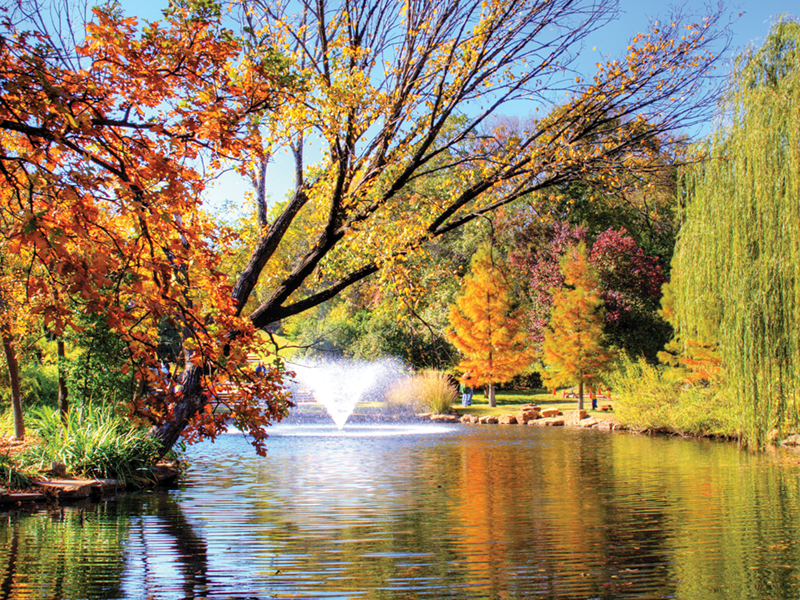Preparing Your Pond for Fall: 3 Dynamics to Watch
As the seasons change, so do pond and lake dynamics! Understanding the changes your pond goes through will help you better prepare your pond AND fountain for fall. In this post, we’ll check out three factors to keep a close eye on.

If you live in a region where the weather begins to shift and foliage starts to change color, your pond water will experience some drastic shifts too. Understanding seasonal changes will help you find timely solutions to your pond problems before you start to experience non-reversible effects.
Temperature
Temperature has a major impact on a pond’s biological needs. Most life in an aquatic ecosystem is temperature dependent. This means as temperature drops, you’ll see a major decrease in its activity levels. Beneficial bacteria are a key part of a pond/lake’s natural clean up system – known as aerobic digestion. Think of aerobic digestion as mother nature’s “garbage disposal”. Its where beneficial bacteria respire and consume oxygen to break down organic waste. When there isn’t enough oxygen available it creates a compounding problem because leaves, water fowl, fish waste, run off, and other pollutants (such as fertilizer) are still putting major pressure on their bacterial counterparts to break down nutrients.
Mother nature’s “garbage disposal” operates 30% less efficient when the temperature reaches 47 - 54° Fahrenheit (8 - 12° Celsius); this number jumps up to 60% when temperatures hit 40-46° Fahrenheit (4 - 7° Celsius). Without additional sources of oxygen, a pond will experience nutrient loading. If nutrient loading is left unchecked it creates a murky sludge that settles to the bottom of a pond floor. Next summer that sludge pile will fertilize your pond’s algae blooms and over time it will continue to build up contributing to a slew of water quality problems.
Light
Light is the second most important factor because of the role it plays in photosynthesis. As the days get shorter a pond’s aquatic vegetation has less access to light. This means the pond’s green plants can’t produce as much oxygen to support healthy bacteria and aerobic digestion. Basically, when a pond’s good bacteria are screaming for additional oxygen to break down that pond sludge or pond muck, its ability to produce it is rapidly decreasing.
Equipment Maintenance
Equipment like pond fountains and aerators helps you add oxygen to your pond and helps bacteria break down troublesome pond sludge. So, make sure you show your equipment a little love from time to time. Regular maintenance keeps your fountain running in tip-top shape and helps meet your pond’s oxygen demands. When all that beautiful foliage eventually falls, you’re going to want to make sure that your fountain’s screen assembly, pump chamber, and throat are free of debris. Blockages impact a unit’s efficiency and could potentially cause issues with the system’s motor.
Conclusion
Fall introduces your pond to a dynamic environment with factors you can’t afford to ignore. By now you should have a clearer strategy for keeping your pond in great shape all season long!
Want to keep your pond healthy and oxygenated all year long? We can help* Get a free quote now or give us a call and let’s talk about your pond environment.
*Independent testing proves that Otterbine systems generate the best oxygen transfer rates in the industry. This helps you give your pond’s aquatic ecosystem the extra boost it needs to stay balanced and healthy all year long!
Have a Question? Need More Help?
Talk to any of our 300+ factory trained sales and service centers throughout the world to get what you need!
